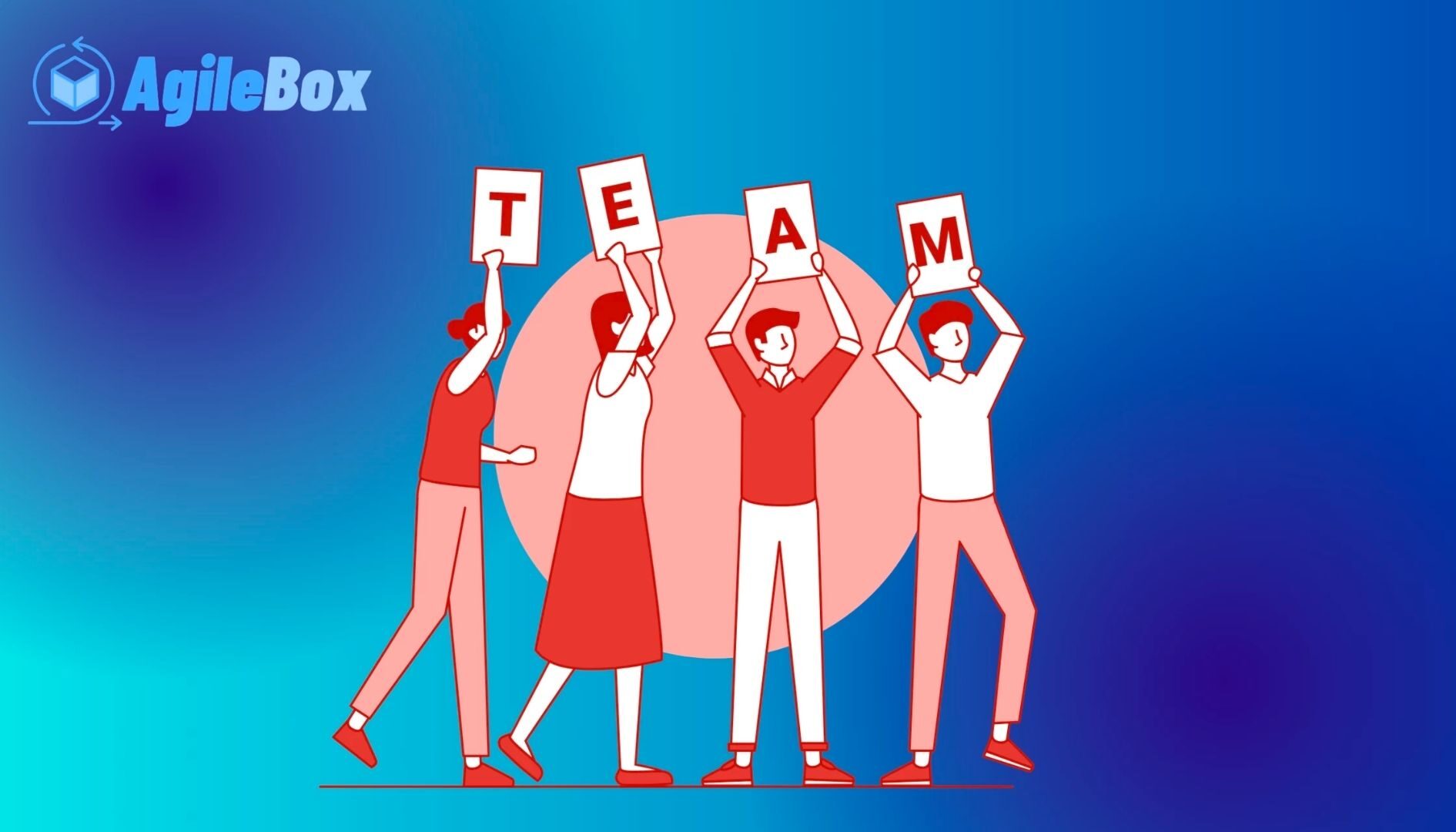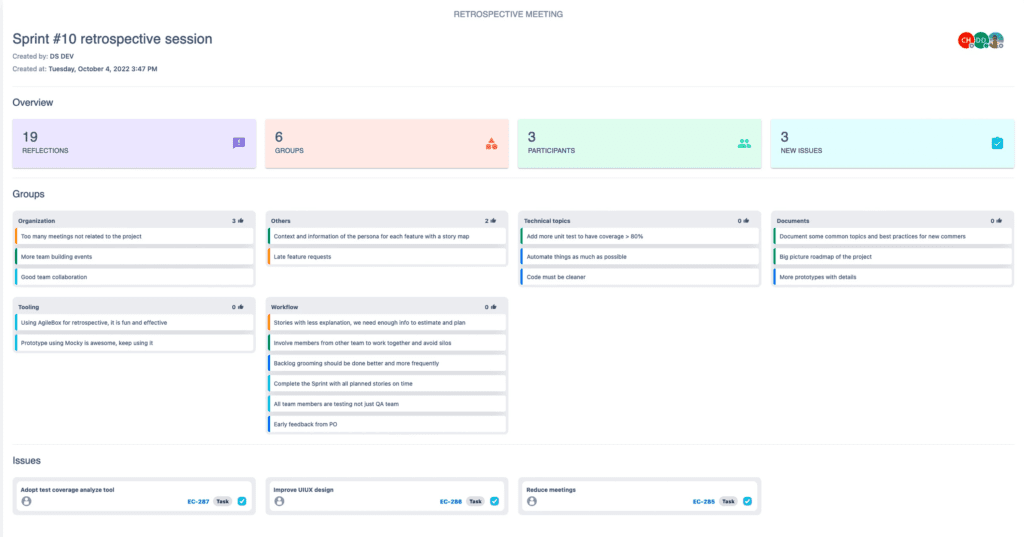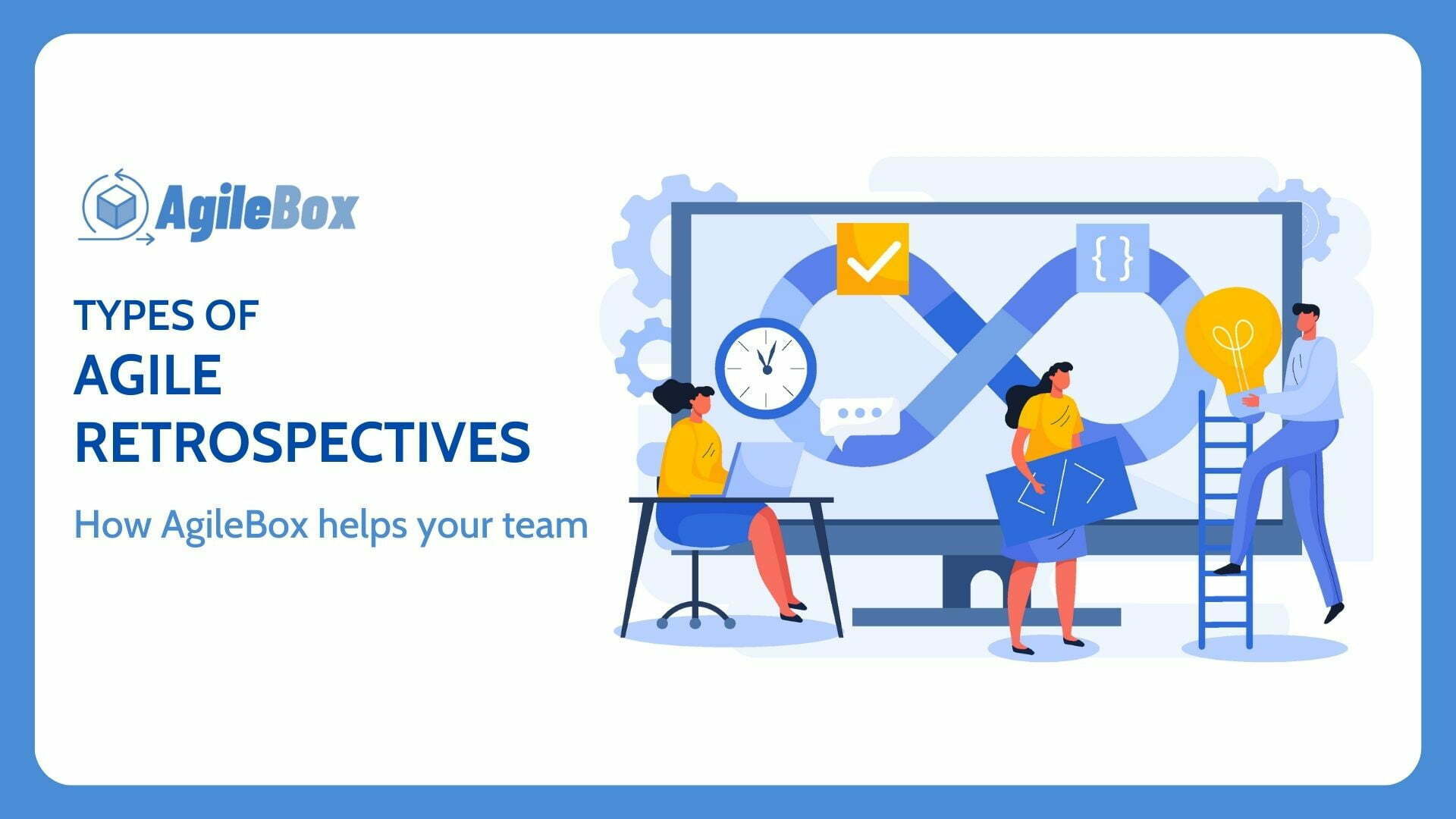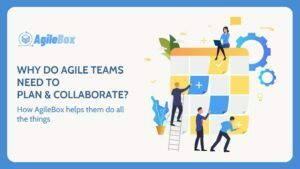What is Agile Retrospective?
An agile retrospective is a meeting at the end of an iteration in agile software development. The goal of the retrospective is to reflect on what went well and what could be improved and to make changes for the next iteration.
The scrum master typically leads the retrospective, but all team members must participate. The meeting should be open and honest, and team members should feel comfortable sharing their thoughts and ideas.
The retrospective aims to enable the team to learn from their experiences, continuously improve their processes, and ultimately deliver better customer value.
During the retrospective, the team typically reviews the following:
- What went well during the iteration/sprint?
- What didn’t go well during the iteration/sprint?
- What can the team do to improve the process in the future?
The retrospective helps the team continuously improve its processes and practices, increasing productivity, quality, and customer satisfaction. It also helps to build a culture of collaboration, transparency, and continuous learning within the team.
Types of Agile Retrospectives

There are various types of Agile retrospectives that Agile teams can use depending on their specific needs and goals. Some of the common types of Agile retrospectives are:
- Drop Add Keep Improve (DAKI): The DAKI retrospective is an Agile retrospective focusing on Discoveries, Achievements, Key learnings, and Improvements. The team reflects on what they discovered, achieved, learned, and what can be improved in the next iteration. It is a structured approach that provides a clear framework for the team to discuss their experiences and identify areas for improvement.
- Liked, Learned, Lacked, Longed for (4Ls). The Four L’s retrospective is an Agile technique where the team reflects on what they Liked, Learned, Lacked, and Longed for in the previous iteration. This helps identify areas for improvement and strengths, enabling better decision-making and value delivery.
- Mountain Climber. The mountain climber retrospective is an Agile technique that uses a mountain-climbing metaphor to guide the team’s discussion. The team reflects on four stages: basecamp, ascent, summit, and descent, focusing on what they did to prepare, what went well, achievements, and areas for improvement. This technique provides a structured approach for the team to reflect and identify areas for improvement while fostering teamwork and accomplishment.
- Glad Sad Mad. The Glad Sad Mad retrospective is an Agile technique where the team identifies what made them glad, sad, and mad in the previous iteration. This technique encourages open discussion of emotions, identifies issues, and helps develop solutions to improve processes, promoting a positive and productive environment.
- SWOT Analysis. The SWOT analysis retrospective is an Agile technique that uses a SWOT framework to assess the team’s strengths, weaknesses, opportunities, and threats. This technique identifies improvement and potential opportunities, enabling better decision-making and value delivery.
These are just a few examples of Agile retrospectives. There are many other types that Agile teams can use to improve their processes and deliver value to their customers continuously. Agile retrospectives are a valuable tool for Agile teams to improve their processes and provide value to their customers continually. Choosing the appropriate retrospective for the team’s specific needs and goals is crucial for a successful Agile retrospective.
How AgileBox helps your teams with the Agile Retrospectives feature?
1. Introducing AgileBox’s Agile Retrospectives feature

AgileBox is a Jira app that helps teams plan, collaborate, and track their agile projects. This is a powerful tool that can help teams to improve their agile development process which is developed by DevSamurai team. AgileBox makes the Agile process seamless, simple, fun, colorful, and productive.
One of the essential features of the AgileBox app is Agile Retrospective, an Online retrospective meeting tool for continuous improvement for remote teams. The Retrospectives feature allows team members to collaborate on retrospective sessions, helping to identify areas for improvement and make adjustments to the team’s workflow.
Here are what Agile Retrospectives for Jira features that AgileBox brings to the table:
- Invite Teams. Quickly invite all your team members with just one click on the Teams option. These are the teams you have created in the AgileBox app.
- Various Templates. Discover templates we provided in the Templates setting, including DAKI, Mountain Climber, SWOT Analyst, and more. Choose the most appropriate template for your team or change it every meeting to make the meeting more interesting.
- Realtime Discussion. When entering the Discussion step after the Vote step, you can discuss with your team in real-time by typing messages into the Chat box on the right for each group created.
- Add Issues: Easily add the issues to your project during the Discussion step without changing to any window. Just click on the Add Issue button on the bottom right. This could help teams have the best experience using Agile Retrospective for Jira.
- Detailed Summary. All of the details of your meeting will be shown on one Overview board, including Reflections, Groups, Participants and New Issues. Teams can easily catch up with all the information in the meeting and store it for later use.
2. Benefits of Agile Retrospectives for Jira by AgileBox

The Agile Retrospectives feature for Jira by AgileBox offers many benefits for teams, including:
- Integration with Jira. The feature integrates seamlessly with Jira, so teams can easily add retrospectives to their existing projects. This makes it easy to track progress and identify areas for improvement over time.
- Convenient for remote teams. The feature is designed to be suitable for remote teams, with features such as video conferencing and chat. This makes it easy for team members to participate in retrospectives, even if they are not in the same place.
- Increased innovation. Agile Retrospectives can help to boost innovation by encouraging team members to think outside the box and to come up with new ideas for improving the team’s process.
- Enhanced learning. Agile Retrospectives can help to improve learning by providing a forum for team members to share their knowledge and experience and to learn from each other.
- Improved decision-making. Agile Retrospectives can help to improve decision-making by providing a forum for team members to discuss and debate different options and to make decisions based on data and evidence.
Overall, Agile Retrospectives by AgileBox is a valuable tool that can help teams to improve their agile development process in many ways. It is easy to use, offers a variety of features, and can help teams improve their productivity and deliver better results.
3. Tips for successful Agile Retrospectives
Here are some tips for running successful Agile Retrospectives:
- Set clear goals. Before starting your Agile Retrospective, ensure you have a clear goal in mind. What do you hope to achieve by the end of the meeting?
- Encourage participation. Everyone on the team should be encouraged to participate in the Agile Retrospective. This is an opportunity for everyone to share their thoughts and ideas.
- Be constructive. The Agile Retrospective aims to improve the team’s process, not to point fingers or assign blame. Focus on finding solutions, not problems.
- Take action. At the end of the Agile Retrospective, make sure you take action on the things you have discussed. This will help to ensure that the team’s process improves.
Conclusion
In conclusion, Agile Retrospectives are a valuable tool for Agile teams to continuously improve their processes and deliver value to their customers. Choosing the appropriate retrospective for the team’s specific needs and goals is crucial for a successful Agile retrospective. AgileBox is a powerful tool that can help teams to improve their agile development process. It is easy to use and offers various features that can help teams improve their productivity and deliver better results.



